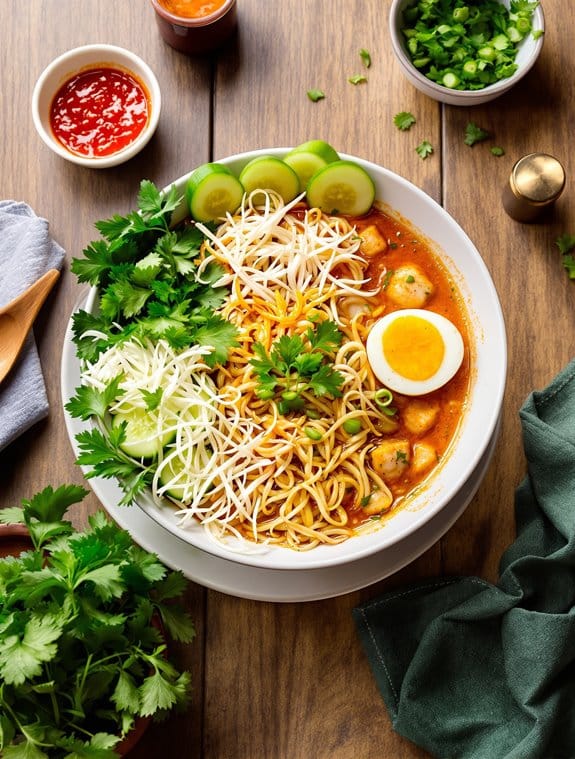Ingredients
Equipment
Method
- Begin by preparing your protein. If using seafood, boil it briefly to create a rich base. For tofu, deep-fry until golden and drain well.
- For the laksa paste, combine coriander seeds, red and green chilies, chopped lemongrass, garlic, shallots, fresh ginger, turmeric, galangal, candlenuts, and shrimp paste. Grind into a smooth paste using a food processor or traditional mortar and pestle.
- Heat enough oil in a saucepan to cover the paste. Add the laksa paste along with fresh basil leaves and the remaining lemongrass stalks (flattened and knotted).
- Stir-fry the paste until fragrant, then add your prepared protein.
- Pour in the stock and bring to a gentle simmer over low heat.
- Stir in the coconut milk and continue to simmer without boiling to maintain the creamy texture.
- Meanwhile, cook the noodles according to package directions, drain, and toss with sesame oil.
- To serve, divide the noodles among bowls, ladle the aromatic broth over top, and garnish with bean sprouts, cilantro leaves, chopped spring onions, crispy fried onions, cucumber slices, and halved hard-boiled eggs.
Nutrition
Notes
For a vegetarian version, simply omit the shrimp paste and use vegetable stock instead of chicken or seafood stock. If you can't find fresh galangal or turmeric, dried versions will work, though the flavor won't be quite as vibrant. Macadamia nuts make an excellent substitute for candlenuts if needed.
The laksa paste can be made ahead and stored in the refrigerator for up to a week, or frozen for up to three months. This allows the flavors to develop even further.
Serve with a cooling cucumber salad or crispy fried wontons for a complete meal. Pairs wonderfully with cold beer or Thai iced tea to balance the spice.
